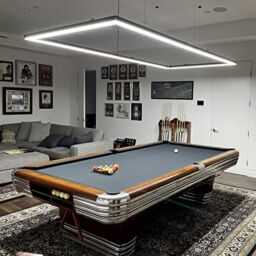A science or an art
Do you think of interior design as a science or an art? Well, it might be a quiet difficult question; but in fact a combination of both. Interior design can be defined as an applied art where creativity skills and technical knowledge provide solutions. These solutions are applied to achieve a more convenient habitat.
Interior design provides answers that are both functional and attractive and enhance the quality of life. Interior design reflects and interacts with the cultural background and traditional heritage of the occupants.
The design process itself runs through a systematic and interactive methodology to create an innovative and functional design solution whereby the needs and resources of the occupants are satisfied.
To achieve a well designed environment many elements contribute together thus innovating the overall theme e.g. color, light, texture…etc. interior design provides solutions for residential, commercial, educational, healthcare, office and hospitality projects consequently affecting our daily way of living or in other words; our behavior.
However interior design leans on our cultural heritage, yet it still can directly or indirectly shape our behavior and definitely it influences our reactions. For instance a room painted in red feels warm than another painted in blue! However it’s the same environment but the color which is an important design element has altered our behavior and way of thinking. The same color itself can trigger different emotions depending on its reference to either symbolic or psychological functions considering the linkages that vary with time, place and cultural background. While white color is worn at weddings and may represent purity, sterility, virginity and peace for some nations, it was the color worn at funerals for others during certain periods in history.
Another noteworthy proof of how interior design can affect our behavior is light! It has to be customized according to the function performed by the occupants. That major element can ensure and highlight a certain frame of mind! For example in a work environment an inadequate light amount would cause annoyance and discomfort. On the contrary you would enjoy a nice dinner or a romantic movie on a dimmed light.
I do believe that the relation between mass and space creates the greatest impact on human behavior. Minimalism where the work is stripped down to its most fundamental features and the subject is reduced to its necessary elements was an approach for better living environments. A cluttered habitat is definitely irritating while fine organized minimal but yet function environments promote serenity and comfort. A good design coordinating mass and space can elevate the sense of creativity and innovation.
Again cultural variations transform occupant’s vision to surrounding space. For instance a minimal designed interior seems less and for some nations less reflects poverty.
The influence of interior design on human behavior is apparent while working for instance on educational projects like nurseries where children experience a phase of mind shaping. Color, light and texture integrate together to encourage creativity. Safety is another dimension that could be enhanced.
From my point of view a global standard design code for interior environments is not applicable since occupants respond in a different way in accordance with several factors such as cultural background, social heritage or climate conditions. Interior design could effectively develop the quality of life in accordance with formerly mentioned factors; focusing on the basics of creating an ideal habitat for living.
AUTOPOST by BEDEWY VISIT GAHZLY




